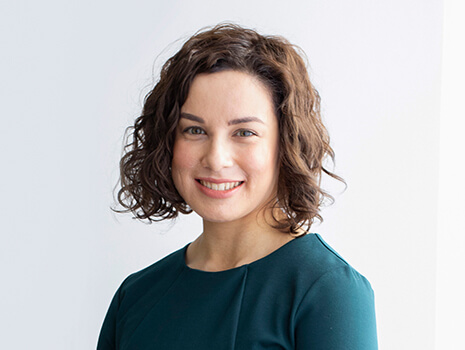





There is no magic number when it comes to the right amount of personal insurance, as this really depends on your personal individual situation. Everyone’s circumstances are different, so it’s important to identify what the financial impact of a specific event would be to you and/or your family. I’ll explain some areas to consider for each of the four types of personal insurances.
What would happen to your ongoing expenses and lifestyle if you were unable to work due to illness or injury? I’m beginning with Income Protection as the ability to work and earn an income is our greatest asset. Sick and Annual Leave may cover you for some time, however what happens if you use all of it and still aren’t able to return to work? This is where Income Protection would help.
Income Protection policies applied for from 1 October 2021 are limited to paying up to a maximum percentage of 70% of your income (prior to this date it was generally 75% income) on a monthly basis. It is also important to remember that Income Protection claim payments are taxable. So not only is it generally impossible to cover 100% of your income through Income Protection, but if you do go on claim any payments you receive will also need to be counted as assessable income on your tax return. Depending on the insurer, Income Protection can also insure super contributions so that these can continue while you’re unable to work.
Ideally it is best to try to insure the maximum proportion of your income possible. Furthermore, it is important to consider the benefit period of Income Protection, which is the duration that you will continue to receive monthly Income Protection payments for. Generally, the longest benefit period you can apply for is to your age 65. This is particularly important for younger people who still have decades of employment ahead of them. The next longest benefit period is only 5 years, so having a benefit period to age 65 mitigates the risk of you not being able to work in the long-term.
What are the financial consequences of you passing away?
A single person with no debt or dependents may not have a need for Life insurance. However as soon as dependents such as a partner or children are involved, the need for Life insurance increases.
Life insurance can pay off your mortgage (or the purchase of a house if renting) so that your dependents would have a debt-free home if you pass away. You may also want to provide for the loss of your income so that your dependents can continue to maintain their lifestyle. This again could vary from person to person. For example, we can calculate to provide ongoing income to your dependents for many years, or even just 1 year of income to allow your partner to take leave from work. Education expenses for your children such as private school fees can also be covered by Life insurance.
Even if you don’t earn an income (e.g., you are a homemaker), you should consider that your spouse would have two choices if you pass away. They may need to take leave from their own job to look after the household and/or children in your absence (hence a loss of income), or they may need to hire someone to look after the household and/or children. Both situations can be insured through Life insurance.
The total calculated need for Life insurance can be offset or reduced by your existing income-producing assets such as superannuation, investment portfolios and investment properties.
What if you become disabled and were told you are unlikely to ever return to work? In this situation your Income Protection insurance would start paying you a monthly benefit. However, given Income Protection generally covers only 70-75% of your income, TPD insurance can assist with other areas such as paying off all debt and future education costs of your children.
TPD insurance can also be used to insure the 25-30% of your income that cannot be insured by Income Protection, so effectively you can have 100% of your income insured.
The expense to hire a carer may need to be considered in the event of your disability, as these can be costly at an average of $40,000 per annum.
Another consideration when determining TPD cover is to include a provision for medical expenses (such as modifications to your home) or tax expenses if TPD insurance is owned through superannuation.
As with Life insurance, the total calculated need for TPD insurance can be reduced by income-producing assets.
What if you suffered a serious illness such as a heart attack, stroke or cancer? Trauma insurance pays out on diagnosis of a critical illness and is unfortunately the type of personal insurance we are statistically most likely to claim upon. For this reason, it is the most expensive of the four types of insurances.
We consider the purpose of Trauma insurance to be used to pay for the medical costs and treatment that are incurred from a critical illness so that you are not needing to deplete your own assets. $150,000 is the average cost for cancer treatment, so we would look at insuring Trauma insurance for this amount as a minimum. Having higher levels of Trauma insurance (say $300,000 – $500,000) can unlock additional options for treating critical illness such as treatment overseas when effective treatment is unavailable in Australia, or the patient is willing to participate in clinical trials or experimental treatments.
At the end of the day, you also need to be comfortable with the amount of insurance premiums you will pay for your personal insurances. It is best to start with an ideal level of cover for your situation and if this is higher than you are comfortable with, an adviser should be able to suggest ways of reducing premiums.
I hope you understand that there are many key factors that determine what is an ideal level of personal insurance, and it is vital that you speak to an adviser who can guide you around what is an appropriate amount for your individual situation.
If you have any questions regarding personal or business insurance, please do not hesitate to contact the Risk & Insurance team at Hewison Private Wealth.
Disclaimer: Any information, financial product or advice provided in this website is general in nature. It does not take into account your needs, financial situation or objectives. Past performance is not a reliable indicator of future performance. Before acting on the advice, you should consider whether it is appropriate to you in light of your needs, financial situation and objectives.